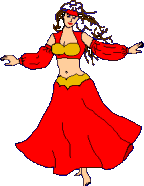To the earlier Greeks, the Moors were “a black or dark people” (Mauros) and to the Romans, Maurus, a black wooly-haired people, known synonymously as Ethiops, Niger (Negro) and Afer (African).
As late as the 5th Century A. D. Procopius, a Roman historian, called the people of Morocco “black.”
In the ‘Chanson of Roland’ (Song of Roland) written after the Moors invaded France in 718 A.D., the invaders are described (verses 145 and 146) as “blacker than ink with large noses and ears” and with “nothing white except the teeth.” (Moriaen. Arthurian Romance No. 4, PP. 29, 39, 41, 103. 1907. Trans. by J. L. Watson).
The Chanson of Roland states that the Moorish army was 50,000 strong and led by Marganice, Emperor of Ethiopia and Carthage. Their most valiant figure is Abisme (that is, Abyssinian), who (verse 126) is described as “black as melted pitch.” In this epic, the Moors are called Sarrazins, in English, Saracens.
In the official coat of arms of Aragon, which has four Moorish kings killed in battle by Pedro VIII, king of Aragon, on November 18, 1096, all the Moors are shown as jet-black. (Biblioteca de escritores aragoneses. Blancas. Comentarios de las cosas de Aragon. Seccion histor. 3, p. 110. 1878.)
Pietro Tacca in his monument to Ferdinand I erected at Leghorn, 1620, has four Moors in chains, which were modeled from originals, one of whom is instantly recognizable as a so Negro. (Raymond M. La Sculpture Florentine, XVIe siecle, pp. 182-3 1900).
Pitch black Negro troops played an important part in the Moorish conquest of Spain especially under Abderrahman I. (757-787), who founded the independent kingdom of Cordova. (Troupes noires. Revue de Paris, p. 62. July 1909 (pp. 61-80). A rival Moorish leader “brought from Africa a great number of Negroes from which he formed a redoubtable regiment of cavalry in 1016” and took over the Caliphate. (Troupes noires. Revue de Paris, p. 62. July 1909 (pp. 61-80).
In 1086, Yusuf ben Tachfln, who is described by Moorish historian Ali ibn Abd Allah as as “dark” and “wooly-haired,” (Roudh ci Kartas, p. 304.) and who was probably a Nigerian, brought in an army composed largely of “pure Negroes” (11. Ency. Brit. Vol. 21 (See SPAIN—Almoravides). Ibn El-Athair. Op. cit. pp. 525 Also pp. 457-60, 462. Scott, S. P. Hist. of the Moorish Empire, p. 622. 1904.)
Another Moor, Yakub el-Mansur, recorded as “the son of a Negro woman,” (Roudh el Kartas, p. 304.) invaded Iberia in 1194 and made himself master of almost the whole of it. The guards of these Moorish kings were specially chosen for their size Negroes, “jet-black and of immense strength, recruited from the Atlas, Tumbuctoo, and Nigeria." (Scott. S. P.History of the Moorish Empire, p. 668. 1904.)
There were white Moors, especially because of their part Berber ancestry and after they had lived in Europe for centuries and had been ‘whitened’ by mating with Europeans.
The mixed racial make-up of the Moors is confirmed by their own writing: the Moorish historian Ali ibn Abd Allah, writing in the 1300s, (recall that the Moors were only finally expelled from Spain in 1452) said that a Moorish Sultan of the time , Mohammed ben Idriss is described as “blond” while Abou el-Hassan el Said had as mother “a Nubian slave . . . dark and of mixed blood,” (‘Aoudh ci Kartas’, by Ali ibn Abd Allah, translated by Beaumier pp. 25, 61, 190, 257, 288, 367).
The favorite wife of Yusuf ibn Tachfin, was a white Christian captive, called Fadh-el-Hassen, or ‘Perfection of Beauty’. (Roudh ci Kartas, p. 224) She was the mother of his frizzy-haired son and successor, Ali.
Abu Hassan Au, “The Black Sultan” whose mother was a Negro slave, had as his favorite wife, Shams-ed-Douha (The Morning Sun), a beautiful white captive. (Scott-O’Connor, V. C. Vision of Morocco, pp. 99-100. 1923).
Of the three Moorish kings killed in the battle of Alcazar in 1578, two were mulattoes and one, an unmixed Negro, Mulai Mohammed “the Negro.” (Chenier L. Recherches Hist. sur les Maures, V 3, p. 328. 1787. (Muley Moharnet qui fut surnomme’ le Negre parce qu’il ‘etait fils d’une Negresse)
.

